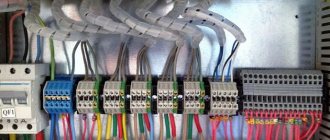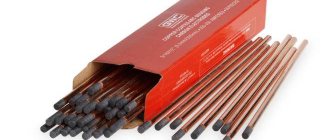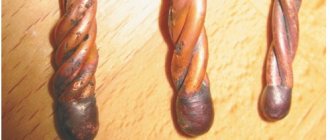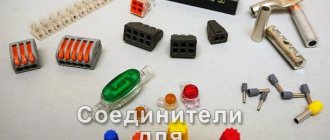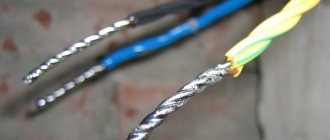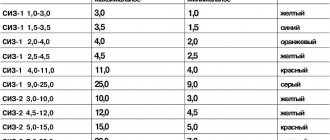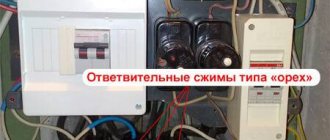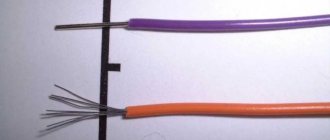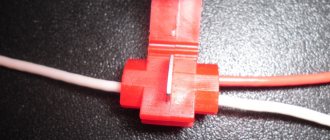When it is necessary to connect a cut cable, several methods can be used: soldering, twisting, welding or crimping. However, it is best to use terminal connections. The product is a block that has a port and is made of plastic. All elements are fixed by a printed circuit board. This is an excellent tool that will be useful in any household. Therefore, the editors of the YaNashla website have prepared for you a rating of the best terminal blocks for connecting wires for 2022.
Types of terminal blocks according to housing material
At a minimum, the supporting part is made of dielectric. Based on its characteristics, the manufacturer selects the minimum permissible distances between the terminals to prevent air breakdown.
- Ceramics. This material has a lot of advantages, and, perhaps, one drawback: it is fragile. The ceramic terminal block is used in electrical installations with intense temperature conditions: heating devices, powerful power busbars (natural heating of the conductor is allowed). In addition, ceramics are used when organizing wiring near mechanisms that have a high operating temperature. The only limitation is that there should be no vibration or shock loads in the places where ceramic terminal blocks are installed.
- Polypropylene. Durable, relatively plastic material. It resists shock loads and vibration well and does not crack when deformed. However, its temperature and dielectric characteristics do not allow use in high-voltage networks with neutral and phase wires located nearby. Therefore, polypropylene products are usually used on one line (either zero or phase), and are limited to 600 volts. Another application is terminals for connecting household lighting devices. In such blocks, zero and phase can coexist.
- Polyamide. Durable, non-flammable material with excellent characteristics. At the same time relatively expensive. Used in pads that have high performance requirements. Due to its resistance to external influences, polyamide can be used both in load-bearing elements and in the manufacture of a durable outer casing.
- Carbolite. Perhaps the best non-flammability characteristics, and the dielectric of this material is good. Withstands static loads and vibration, but may crack upon impact. Carbolite terminal blocks are used in any electrical installations, except for heating elements. Except that the cases they make are not very durable. Carbolite blocks are widely used in household lighting equipment. Almost every second chandelier is connected using such a switch.
- Polyvinyl chloride (PVC). Blocks for mass use for low-current connections. Again, household appliances and lighting. The material is non-flammable, quite durable, but deforms when heated. The main advantage is the low price. For this reason, many unscrupulous electricians use these blocks for other purposes when assembling powerful electrical installations. Such “savings” often lead to breakdowns of switchboards and electrical equipment failures. In addition, such pads are available in a convenient form factor: the line can be easily divided into the required number of contacts.
- In the manufacture of terminal blocks for wires, textolite and ebonite are also used. But these are piece products for certain projects: the material is too expensive.
Advantages and disadvantages of terminal switching
Using terminals, you can connect copper and aluminum wires.
To connect a power cable on the street or in the house, the simplest option is to use connecting terminals for leads. Main advantages of the method:
- constructive variety of connectors;
- possibility of dismantling and repair;
- simplicity, speed and accessibility of installation;
- electrical safety, dielectric housing protects against electric shock;
- resistance to mechanical load and vibration;
- possibility of switching metal conductors of different sections and materials.
Flaws:
- allocation of additional space in panels and distribution boxes;
- high cost for large-scale work.
Electrical clamps are durable and reliable; to install them, you only need a screwdriver.
Screw type terminal blocks
Screw terminal blocks are one of the most common types. They are a brass sleeve with two bolts in a plastic case. Contact is ensured by bolt pressure. The body can be made of different materials - polyethylene, polyamide and polypropylene. With their help, you can connect wires with a cross-section from 0.5mm2 to 35mm2.
The advantages of screw pads include:
- No special tools required (only a screwdriver is needed).
- Reusable.
- Possibility of using the required number of segments.
Screw pads also have a number of disadvantages:
- High contact resistance.
- Low reliability (weakened by vibration).
- Restrictions on wire material.
- Installation duration.
- Requires some skill to tighten.
- Annual maintenance required.
It is not advisable to connect aluminum wires with such terminals. They have increased “fluidity”; the connection weakens over time. To avoid heating due to an increase in contact resistance, it is necessary to tighten them regularly. This creates inconvenience during operation.
Certain problems also arise with multi-core wires. With screw connections, high-quality installation can only be performed using special tips or blocks with a pressure plate. Otherwise, there is a risk of damage to the cores when tightening the screw.
Thus, single-core copper wires are most suitable for this design.
Installation with a screw connection is very simple:
- Cut off the required number of terminals from the block (with a regular knife).
- Strip the insulation of the connected wires (5-12mm).
- Insert the stripped ends of the wires into the terminals;
- Tighten the screws.
It's easy to deal with
The main thing is to be careful when tightening screws and choose quality terminal blocks
When choosing, you need to pay special attention to the manufacturer of the product. Today there are products of different brands on sale
It is better to use products from such well-known manufacturers as Legrand, ABB, Tridonic, Werit.
Product prices depend not only on technical characteristics, but also on the manufacturer:
| Manufacturer | Type | Characteristics | Price, rub |
| Tridonic | EKL 0 S | 450V,32A,12pairs,4mm2, white. | 55,64 |
| Legrand | Nybloc 034211 | 250V,24A,12pair,4mm2, black. | 209,00 |
| Korner | OK 432-PLP-BN | 450V,32A,12pairs,4mm2, white. | 118,68 |
| Tridonic | EKL 3 S | 750V,76A,12pair,16mm2, white. | 158,78 |
| Legrand | Nybloc 034211 | 250V,76A,12pairs,16mm2, white. | 540,49 |
| Werit | 112-11521 | 250V,63A,12pairs,16mm2, white. | 299,23 |
Screw terminal blocks
The second type is terminal blocks with screw connections. This is the most common type of such devices. The disadvantage of screw terminal blocks is the need to periodically tighten the screws, which is very inconvenient, especially if the terminal block is located in a hard-to-reach place or there are many of them.
Chinese terminal blocks made of transparent polyethylene with brass bushings and screws are well known. Many fires occurred due to their fault, or rather due to poor contact in them.
Rules for choosing self-clamping terminals
The main rule for a potential buyer of self-clamping terminal blocks is, perhaps, the mandatory verification of the product for authenticity. There are a lot of counterfeit goods on the commercial market, marked with the German brand - the manufacturer Wago itself warns about this.
The cost of such products is reduced, which naturally attracts the buyer. However, this kind of savings can result in troubles when operating the assembled circuits.
Meanwhile, without unnecessary warnings, it should be obvious that a counterfeit product is a significant reduction in quality. How to choose the right wire connectors without fear of getting a fake? In principle, everything is quite simple. You just need to be more careful when choosing self-clamping terminals for installation.
A branded product traditionally has the Wago logo printed in a clear font, usually on the top or side of the case. Also on the side are the main parameters - voltage and current.
This is what a branded product released under the Wago brand looks like. Counterfeit terminal blocks, as a rule, do not contain such a seal, or contain a partial one applied with low quality
The color of the insulating material of branded products is distinguished by a uniform, clear color. There is a mini connection instruction on the back/side of the terminal block.
When compared with Chinese counterfeit goods, terminal blocks, as a rule, do not have any of the above-mentioned differences. In addition, the fake is immediately distinguished by the blurred color of the insulator, often multi-colored.
Of course, the main points of choice are the purely technical parameters of self-clamping terminal blocks. In particular, the operating voltage and permissible conducted current.
If the mounted circuits are designed for operating voltages that exceed the capabilities of the terminal blocks, then the application becomes impractical and, moreover, dangerous.
You will learn about the color of the connected wires from the following article, the contents of which we recommend that you familiarize yourself with.
How to choose the right terminals for wires
Before purchasing wire connection terminals, you need to research the power cable. You will need the following information:
- section;
- number of cores;
- conductor material.
An important criterion is the rated current. This characteristic is indicated by the manufacturer. If it is insufficient, the connector will begin to heat up and melt. The material of the case matters. For household appliances, sockets and switches, products made of polypropylene and polyamide are suitable. It is recommended to install ceramic devices in power buses. The last criterion is terminal size. It should be compact to fit in limited space.
Types of terminal blocks by contact arrangement
The simplest block is a metal strip with a series of contact clamps. Designed to combine multiple wires with the same rating. For example, zero bus or grounding.
The main wire comes to one of the screw terminals, and the entire block acquires the necessary potential.
The feed-through type is designed for linear connection of wires. Often used for splicing different metals (copper and aluminum).
There is another type of feed-through terminal block.
The main principle is that parallel conductors are separated by a dielectric.
Barrier blocks are similar to pass-through blocks, but they provide more reliable protection against short circuits of adjacent wires. The dielectric extends beyond the contact plane and additionally protects the block from accidental short circuit (for example, a conductive element falling onto the terminals).
Wago terminal blocks official website
WAGO Kontakt Rus LLC was founded in 2007 and is a subsidiary of WAGO Kontakttechnik GmbH & Co. KG (Germany).
- The main office is located in Moscow; in addition, for the convenience of customers, there are branches in 7 cities of Russia:
- St. Petersburg;
- Novosibirsk;
- Yekaterinburg;
- Rostov-on-Don;
- Kazan;
- Samara;
- Cheboksary.
All necessary information about WAGO products in Russian and contacts of offices in Russia is available on the official website www.wago.ru
Where and how you can buy inexpensive terminal blocks for wires: prices, market overview
| Photo | Brand/Model | Product type | price, rub. | Peculiarities |
| DINKLE/DT126VP-03P | screw | 26÷37 | Operating current up to 8 A. Maximum wire cross-section – 2.1 mm2. | |
| TDM/SQ0510—0002 | screw | 27÷34 | For 12 contacts. Conductor cross-section – up to 4 mm square. | |
| TDM/SQ0527—0012/CR-413 | connection terminal | 35÷40 | Analogue of "Vago". The price is for a model with three slots. | |
| Schneider Electric/NSYTRV42BL | screw pass-through | 68÷85 | Rated current – 32 A. The clamps are made of copper alloy. | |
| Legrand/004803 | screw | 180÷190 | No insulation. | |
| WAGO/2273 | Compact | 21÷45 | The transparent part of the housing simplifies visual inspection of wire placement. |
Where to buy self-clamping terminal blocks for wiring in an apartment
You can purchase a similar product in a regular electrical store or from online sellers, whose prices will be slightly lower. Let's try to figure out what the cost of self-clamping terminals is.
| Photo | Wago Series | Current load, A | Core cross-section, mm² | Number of cores, pcs | Cost, rub. |
| 224 | 20 | 0.5-2.5 | 1 | 16 | |
| 222 | 32 | 0.08-4 | 3 | 18 | |
| 222 | 32 | 0.08-4 | 5 | 28 | |
| 773 | 25 | 2.5-6 | 3 | 17 | |
| 773 | 25 | 2.5-6 | 8 | 22 |
With terminals everything would look much more aesthetically pleasing
Basic methods of connecting wires
Connection methods between wires and cables are selected depending on the metal used, thickness, number of cores, type of insulation and other factors. It is also necessary to take into account what the conditions of further operation will be.
Twist
The most common and simple method is twisting, which does not require any special tools. A strong and reliable connection is made with just a knife and pliers. It is enough to strip each core by at least 50 mm, clamp them with pliers, and then twist them together with rotational movements. The twist is wrapped in any direction and insulated.
Electrical tape should not be skimped on: it should be wound not only at the twisting site, but also on the wires themselves, extending 20-25 mm onto them. In addition to electrical tape, heat-shrinkable tubing can be used. Such a connection lasts a very long time, it tolerates vibration well and is most suitable for use in moving mechanisms. However, this method is not suitable for connecting copper and aluminum wires that have different structures and different cross-sections.
Soldering
Soldering is considered a more reliable method, ensuring good conductivity and safety. Tinning is done with rosin, and tin or lead is used for soldering copper wires. Aluminum wiring is soldered with zinc-based compounds with the addition of tin, aluminum or copper. The wires are pre-twisted, then rosin is first applied to this place, and then heated solder. At the end of the work, the connection is isolated. The only drawback of this method is the fragility of the soldering joints and their poor resistance to vibration and mechanical stress.
Terminal blocks
The most modern and progressive method is connection using terminal blocks. Such electrical connectors significantly facilitate and speed up wiring installation and confidently replace traditional switching methods. The main advantage is the ability to connect conductors made of dissimilar materials.
Thanks to the design of the terminals, direct contact between copper and aluminum is eliminated, as a result, the formation of corrosion, as happens with conventional twisting, is completely eliminated. Almost all connectors for electrical wires are made of brass alloy, and can be structurally spring, screw or knife. The internal cavities of some models are filled with a special gel, which provides additional anti-corrosion protection for the contacts.
Twist
This method is used in the absence of special tools and additional devices. The wires are twisted and wrapped with electrical tape. This option is reliable, but you need to follow some rules. Copper twists only with copper, and aluminum with aluminum. It is forbidden to twist copper and aluminum products, as this causes an electrolysis process and destroys the components. The twisting option depends on the material, diameter and purpose of the connection.
The modern version of twisting is performed without pliers, but with the help of special polymer caps, inside of which there is a metal spiral. To make the connection, the ends of the wires must first be stripped to a distance of 15 mm, and then inserted into the cap. Then the body is turned all the way.
Pros of twisting:
- simple technology;
- available materials.
Minuses:
- Do not connect aluminum and copper wires;
- not very high quality connection.
This option is suitable for temporary wiring.
Twisting wires
Important! Twisting is not used in rooms with high humidity or in buildings made of wood.
Stranded and single-core
When connecting multi-core wires, the following rules should be followed:
- strip the insulation by 4 cm;
- unwind the conductors by 2 cm;
- connect to the junction of untwisted conductors;
- twist the wires only with your fingers;
- You can tighten the twist using pliers;
- bare wires are insulated with special tape or heat shrink tubing.
Permanent connection
This installation method is performed in the same way as using a bolt and nut, but using a special tool - a riveter. The operating principle of the riveter lies in the rivet design.
It is a hollow aluminum tube with a thickening at one end. A metal rod with a head is inserted into the rivet. When the rod is pulled through the rivet, it forms a bulge at the other end of the rivet, while simultaneously expanding the tube itself somewhat.
When a certain maximum force is reached, the rod breaks off, leaving a clean, formed rivet. If you do not take into account the cost of the tool, the price of an individual rivet makes this type of installation the cheapest after twisting. There is only one drawback - such a connection is disposable and permanent.
Another option for permanent connections is obtained by using special tinned copper connecting tubes. Such tubes are produced in several diameters to suit the most common diameters of the wires being connected.
The stripped ends of the wires are inserted into the opposite ends of the tube and the latter is crimped with a special device. Together with twisting, this is the most compact type of connection of conductors.
This method can be used only if the diameter of the wires is the same and exactly matches the diameter of the tube.
Which is better: twist or clamp Wago
We all know that it breaks where it is thin. It’s the same in an electrical circuit - during emergency conditions, a break occurs primarily at the junction of the wires, and not in the wire itself. This happens due to the appearance of transition resistance at the junction of the wires, therefore, the better the contact, the lower the transition resistance, the more reliable the electrical circuit.
In home electrical wiring, in the past, probably in 90% of cases, connections were made by twisting wires followed by soldering or welding, but often just like that. Sometimes bolted connections and terminal clamps were also used. But science does not stand still, and self-clamping terminals were invented to help electricians; now they are also called Wago clamps.
Work has become easier, more fun, when disconnecting in the junction box, you know, have time to insert the wires into the clamps, everything is very simple - insert it and forget it. There is no need to remove a lot of insulation from the wire, 10-12mm is enough, no need to twist the wires or insulate them. The only negative is the inability to connect flexible wires with Wago clamps.
Why is twisting worse? Is she really that bad and loses in all respects to the Vag clamp? I somehow felt offended for her, especially when you read on the forums - “Twisting is illegal!”, or “Twisting is used only by amateurs, this is the last century!” and so on.
Now, I don’t consider myself an amateur and have made many connections using twists - with and without welding, and I think that a well-made twist is no worse than modern clamps like Wago. I decided to test these two connections and find out how they behave under different operating modes - nominal, maximum operation and emergency mode - severe current overload of the wire.
I took four pieces of copper wire with a cross-section of 2.5 squares, two of them were connected by twisting, the other two were connected with a Vagov clamp, purchased in a store and intended for this cross-section of wires.
Previously, I had already “tortured” the Vag clamp and tried to measure the parameters of the contact resistance. I was never able to measure the resistance because I couldn’t find a device; a microohmmeter is required. Then I began to reason like this: if there is a transition resistance, then heating will occur in this place when an electric current flows above the permissible one.
The heat will cause the insulation on the wire to melt, and if there is a higher transition resistance in the twist, then the temperature will be higher, and the insulation will begin to melt earlier. This means that it is necessary to turn on the same load through these two connections, and with a current greater than the permissible one for the same time at the same room temperature. After which it will be possible to indirectly draw a conclusion: which wire connection is better - twisting or Wago clamp.
To test my assumptions, I assembled my own test bench. The wires were connected in series through the terminals of modular machines, and as you know, when two conductors are connected in series, the electric current is the same. This means that at any given time the same current will flow through the connections being tested.
All that remains is to connect the load and measure the temperature at the twist and clamp for comparison. At first I decided to make the current a little more than rated - 30 amperes. The temperature was measured with a pyrometer and a thermal imager. After 1.5 hours of testing, the temperature at the twist became a maximum of 43.9 degrees, at the Wago clamp - 56.9. The difference is small. But she is! So far the twist is winning.
Moreover, I didn’t even weld the twist – I just twisted the wires tightly and that’s it. I left the wires under this current for another 3.5 hours and the following measurements showed that the temperature did not change.
The next stage is to turn on a load with a current of 50 amperes. After just 20 minutes, the temperature became 82 degrees at the twist and 96.4 at the Vagov clamp. I kept him under this current for three hours. The temperature did not change, the insulation did not melt.
Copper wires can withstand twice the permissible current, although they are in the same insulation and located in the air, that is, their heat transfer is better than, say, wires under plaster. Of course, if these same wires were laid in the wall under the plaster, they would become much hotter.
And finally, I decided to turn on the wires at 80 amperes to see what would happen at three times the permissible current. And here I saw with my own eyes how the twisting withstands the current, and the Wago clamp began to melt from the heat and the wire insulation began to swell and become covered with bubbles, and the melting begins from the Wago clamp! With twisting, you can see that the wire heats up evenly along its entire length from start to finish.
After literally two minutes of testing, I was done. The insulation on the wires is swollen and blackened. We can draw conclusions: twisting won in all respects!
I saw that the transition resistance of a wire connected by twisting is almost zero, but the Vagov clamp has it and is much greater. So, ardent opponents of twists have a worthy answer in the debate between twists and the Wago clamp: there is no need to be so categorical and blindly reject what has been used for decades - I’m talking about twists, of course.
Well, in favor of the Vagov clamp, I want to say that it can be used where the current does not exceed the permissible limit, and there is also access to service this contact connection.
Existing types of terminal blocks for connecting wires
The terminal block is a mechanical clamp located in a plastic housing. The terminal, depending on the type of clamp, may have metal plates, springs for fixing the wire, or screws.
There are different types of wire connections using a terminal block.
Types of terminal blocks by type of wire clamp:
- Knife clamps;
- Screw terminals;
- Spring clamps.
The knife type of connections is very convenient. When making a connection, you do not need to strip the contacts; you just need to apply some force to firmly fix the wire in a special knife. These terminals are also called plug-in or automotive terminals. Using a screw type of connection, select suitable pads and the required cell sizes, insert the core inside and then clamp it with screws
When applying force, it is important not to break the wire. After about a year, you will need to check whether the screw in the connection has come loose and, if necessary, tighten it
And another disadvantage of this connection is that only two wires can be connected without problems. The most convenient connection option is a spring connection. When making this connection, you just need to insert a wire stripped of insulation into the terminal block. The lever located there will tighten the core and will not release it back; you can remove the core by pulling the lever back, but when you reconnect, the quality of the connection deteriorates. The characteristics of spring-type clamps limit their use to wires with a cross-section of no more than 2.5 mm2 and a current limit of up to 40A.
Peculiarities
When carrying out a major renovation, a person changes everything in his house, including the wiring. A new junction box is installed where wiring needs to be done. To do this better, it is best to use terminal blocks. This is an excellent device that will provide tight fixation for the entire period of operation.
Today, new types of this product are being produced, which are many times superior to screw ones. To carry out installation and wiring, a person will need a minimum of time. This was largely made possible thanks to self-clamping terminals.
What are terminals?
Terminal clamps are electrical devices used to connect cables and wires. The design of the terminals includes 2 or more contacts made of conductive metal, equipped with fastenings for conductors. The terminal block housing is made of dielectric material to prevent short circuits or electric shock.
Conducting plates are made of copper or copper-based alloys. The minimum resistance is ensured by tinning, that is, coating the plate with a layer of tin or tin alloys. Varieties of terminal blocks are equipped with springs; a copper plate is in contact with the wire; the spring itself is usually made of chromium-nickel steel.
Plastic or porcelain is used as the insulating material of the housing. The material is selected taking into account resistance to deformation and high temperatures. The use of terminal blocks in installation has become widespread, and gradually soldering of wires fades into the background, giving way to terminal connections. Using terminals is more economical than soldering and is significantly more reliable. The terminals have proven their effectiveness in connecting wiring with copper and aluminum conductors, providing a high-quality connection and protecting the cable from mechanical stress during installation.
RCD connection diagram: instructions, methods, errors
What is an RCD in electrical engineering: types, principle of operation
Summarizing
When installing electrical wiring in an apartment or private house, you can use any terminal blocks. In any case, it will be faster, and in reliability they are not inferior to soldering or welding connections. Additional time saving is on contact insulation. But still, the fastest and highest quality connection will be installation using self-clamping terminal blocks. But do not forget about the current load, which is limited by any element of the electrical circuit.
We hope that the information presented today will be useful to our reader. If you have any questions while reading the article, our team will be happy to answer them. Ask them in the discussion below, share your experience - because it may help someone.
Finally, we suggest watching a useful video on the topic of our conversation today:
Types of terminals
Terminal blocks
there are cells in the body
The advantages of such terminal blocks are that different materials can be connected. For example, a terminal connection of aluminum and copper or large cross-section and small. This is very convenient, because the connected aluminum and copper wires oxidize, which causes inconvenience during further operation. Connecting terminals do not allow direct contact of wires with each other. When choosing, you need to know the current that will flow through the wires; it must be less than the rated current of the terminal block. Reliability, of course, is less than with soldering, but it is very convenient, and installation time is also reduced.
According to the design of the connection of wires with a terminal block, there are the following types:
- screw;
- spring;
- knife
Screw terminal blocks
Installing the terminal block does not cause any trouble even for people who are far from electricians. Connecting the wires is very easy: you need to select a block with the required mesh size, insert the wires inside and tighten them with screws. You need to tighten it with a fairly strong force. You need to feel the moment when the screw is already tightened so as not to damage the core. After about a year, it is necessary to check the connection and tighten the screw if necessary. This refers to the disadvantages. There is also no way to connect three wires.
You can also use a rivet instead of a screw. But then you need a special tool, and you need to take into account that the structure is then difficult to disassemble. Place an aluminum wire on the rivet, then a spring washer, a copper wire and a flat washer. This structure is compressed with a special tool. If the same materials are used, then there is no need to place a washer between them. But the last washer should be the same.
Spring terminals
The lever will tighten the wire
The disadvantages include the fact that you have to constantly select the terminal block according to the number of connections. That is, if it is necessary to connect three wires, then you need a terminal block that provides for the connection of three wires. If there are more than six wires, then you will have to combine the terminal blocks with each other. Electrical experts recommend using spring terminal blocks to separate phase and zero
It is also important to remember that if you disconnect the lever once, then the reliability of the connection will deteriorate when clamped again.
Blade terminals
Knife terminals are also easy to use. When connecting, there is no need to pre-clean the contacts. But force must be used, because you need to carefully fix the core in a special knife. Often such terminals are called plug-in terminals and are used in cars, for example, when connecting to a headlight lamp.
Terminals for distribution boxes
Terminal blocks are also used in distribution cabinets. They are presented in the form of a polycarbonate case with a copper platform on which holes for connection are located. They also have steel springs to secure the wires. It is very convenient to use terminal blocks when you need to connect the ground wires into one common one. This type of terminals is suitable for connecting wires of various types. For ease of installation, data with the value of the rated current, wire diameter, and maximum permissible loads are printed on the case. A paste is also provided to prevent overheating.
Fused terminals
Manufacturers have also provided additional protection for the electrical wiring and equip the terminals with a fuse. This type of connection has a holder that holds a standard fuse. Very convenient when operating electrical equipment without a built-in fuse.
Terminal blocks for lighting
Terminal blocks for lighting can significantly simplify and reduce installation when laying electrical equipment for lighting. The case allows you to withstand temperatures of about 105 degrees, copper contacts make it possible to improve conductivity, and springs securely fix the cores. Such terminal blocks are sometimes made with a special paste that protects the connection from oxidation and prevents the conductors from overheating.
Terminals for luminaires
When installing chandeliers, floor lamps or fans together with a chandelier, you can use a terminal block for lamps. It is very convenient to connect up to five wires simultaneously. They are equipped with self-clamping contacts, which facilitates installation and installation, while also reducing the amount of consumables. All terminals are marked and have convenient latches that allow for quick installation.
Main requirements
The only main requirements that are often presented to this element are to ensure tight fixation and protect the cores from oxidation. You shouldn't expect anything more from this product.
If a person plans to use a screw connection, then it is necessary to check the tightness of the fastening at least once a year. Because the chance that the contact may loosen is high, this will lead to oxidation of the wire, and in some cases this will cause overheating.
What types of pads are there?
There are several types of terminal blocks, differing in withstand voltage, method of fixation, purpose, functionality and many other performance characteristics.
The most common division is the following:
- By installation method (for connecting individual wires, for a printed circuit board, for G and DIN rails, for cross-modules);
- If possible, cutting off the required number of terminals (solid, connected by plastic plates or special clamps, connectors);
- According to the method of fixing the wires (straight, angular).
However, the division of blocks according to the clamping structure, that is, the method of connecting the wire, is considered decisive:
- Screw terminal blocks use a clamp with screws that are tightened after the conductor is inserted into the hole. The “advantages” of the screws include cost-effectiveness, reliable fixation, and the ability to regulate the pressure force, while the “disadvantages” include the need to control the position of the wire and the impossibility of using them for stranded conductors and aluminum conductors.
- Detachable ones consist of two parts, where one is attached to the panel, and the second directly to the wire.
- Spring or push terminal blocks are also called screwless terminal blocks, since the fixation occurs through a special lever, after pressing which the structure “closes”.
Methods for fixing conductors
There are 8 ways to fix conductors in terminal blocks, but most often three types are used for domestic purposes:
- screw;
- spring (self-clamping);
- clamping
The clamps on the terminal blocks are spring and screw
Each fixation method has its pros and cons. If you follow the installation rules, they all provide good contact. It’s just that the time it takes to connect the wires varies.
Screw
One of the most popular types of fixing conductors in terminal blocks is with screws. On the market or in stores you can see two types of terminal blocks with screw terminals. The first type is more modern - with closed contact pads. They are hidden in the housing, just like the screw. In the picture below, this option is made of white plastic and is located at the bottom.
Terminal blocks with screw clamping of wires
The wire is stripped to 8-10 mm, inserted into the socket, and tightened with a screw. In this case, neither the bare conductor nor the screw, which is also under the influence of electric current, are accessible to accidental contact. It is perfectly. But in this model there is only one contact plate - at the bottom. Contact is ensured by the screw pressing the conductor against the plate. This is not bad, but only over time the screw pinches the wire, and it may even break off. And if you don’t break off, the contact will worsen.
This type of contact is sealed in the housing
Other screw terminal blocks have open pads (see photo below). From an electrical safety point of view, this is not very good - you can touch live wires. But the clamping screws are equipped with square washers. With this method, the contact has a large area and the wire is not squeezed. To increase safety, similar screw terminal blocks with protective plastic covers are produced. The lids are made of transparent plastic and can be snapped on, hinged, or screwed on with small screws.
A white metal plate is located at the bottom and connects the connected wires, screws with square washers ensure high-quality contact
If you decide to use screw terminal blocks, remember that when connecting copper wires, the screws must be tightened twice. Copper is a soft metal. Once you tighten the screw, the contact is good. To check, they usually pull the wire with force several times. If it's tightened well, it won't move. But after some time, 30-40 minutes, the copper will be crushed under the pressure of the screw. Sometimes so much so that when twitching, the conductor can be pulled out. So you need to re-tighten the clamp.
Spring (spring loaded)
Screw terminal blocks are good for everyone, except that it takes a lot of time to connect the wires. Connecting the four wires is no problem - it only takes a minute or so. And if you need to make a couple of dozen connections... What if there are a hundred?
Spring terminal blocks Vago
Second point: the quality of contact depends on how carefully the screw is tightened. On the one hand, you cannot pinch it, as it may crush the wire. On the other hand, insufficient clamping means poor contact. So there is a “human” factor here, which is not good.
Device and types
Terminal blocks with spring contacts do not have the above disadvantages. Such terminals are also called self-clamping. The plastic case contains a plate made of elastic steel. This plate has a special shape - a flat spring is made from it. To connect the conductors, they must be inserted between the petals of the plate. The conductor opens the two “wings” of the spring, and they, due to the elastic force, fix it and ensure contact.
What is in the spring terminal block housing. These are samples of springs for terminal clamps from one of the most famous manufacturers - ]WAGO[/anchor]
There are spring terminal blocks for connecting from two to eight wires. You can find more if you wish. According to the installation method - conventional, without fixation, with DIN-rail mounting, with wall mounting. For power installation - in an electrical cabinet - special models are produced. They differ in that they have a more massive body. They are comparable in size to circuit breakers and other devices, although their operating principle is the same. There is a metal plate inside, the edges of which are folded to ensure contact. Two conductors are inserted into the corresponding sockets, a spring provides contact, and a metal tape connects.
Spring loaded DIN rail terminal blocks
At the same time, they are trying to make “regular” terminal blocks smaller in size. If you use them for wiring, you often have to hide them in junction boxes. Space there is very limited, so the smaller the size, the better.
If we talk about the types of spring terminal blocks, then they come with detachable and permanent clamps. One-piece ones do not allow you to remove the wire without damage. First, it leaves a mark on the copper, so you have to clean up another piece. Secondly, it is better not to use this terminal block a second time - the spring may already be weakened, which will worsen the contact.
Detachable spring terminal blocks can be used multiple times
Detachable spring contacts on terminal blocks are different in that they have the ability to loosen the spring and simply remove the wire. Usually these are various kinds of levers or buttons. The removed wire still needs to be stripped again. The mark will still remain, and the oxide film is also present. But the terminal block can be used several times without any worries, since it is designed for this.
Advantages and disadvantages
What are the benefits of spring terminal blocks? Installation is very simple, everything happens very quickly. You just need to strip the conductor and insert it into the socket. That's all. The second positive point is the minimal impact of human error. All you need to do is clean the wire and make sure there are no oxides. This must be done in any case to ensure stable contact quality.
Spring terminal blocks also have disadvantages. Some people do not advise using these terminals, as “the spring may weaken,” which will cause poor contact and the connection will heat up. And it can even cause a fire. In principle, the spring may weaken. Just like the copper under the screw can “settle”. If the spring is made of good metal, nothing happens to it for decades. Spring contact blocks were developed in Europe and have been used there for a long time. If there were such cases - fires due to poor contact in the terminal block - manufacturing companies would already have to pay huge compensation in court. And it’s not a fact that it would have cost only compensation. This is not the case, so there is no need to worry about the “possible” weakening of the contact. You just need to do everything right and not buy a cheap fake. I would like to, because terminal blocks from WAGO, one of the leading manufacturers of spring clamps, cost a lot. And this is their main disadvantage. But if you do it for yourself, it’s better not to save money.
Design and assembly of the terminal block
Each DIN rail terminal block is fixed with a latch, so that one fits tightly to the other. There should be no gap between them. Then the necessary jumpers, end insulators and clamps are installed. Don't forget about the labeling. The wires are connected taking it into account and in accordance with the diagram. If the terminal block is screw, then the bolt must be loosened before operation. During installation work, the reliability of all contacts must be checked.
Why do you need an end insulator?
On the right side of a separate terminal block cell you can see the current-carrying elements of the clamping mechanism. The manufacturer deliberately leaves them open and does not make an additional partition. This is explained by material savings and a reduction in the overall dimensions of the product. When the terminals are assembled on a DIN rail, each right-handed one automatically covers the current-carrying parts of the left-handed one. Those. one terminal block is a protective cover for the other, so for the entire line except the last one.
End insulator
To protect the rightmost terminal block from the environment and accidental human touch, end insulators are used. They perform the function of a side cover and allow you to obtain a row of terminal blocks that is completely insulated on all sides.
Important! End insulators and terminal blocks should be purchased from the same manufacturer. Otherwise, they may not match in shape.
The calculation must be made based on the fact that one insulator is required for one line of terminal blocks.
Terminal retainer or stopper
When installing or tightening screw terminals, individual cells may begin to move apart on the DIN rail to the sides. As a result, cracks and gaps form in the structure. Through them, dust and moisture from the air can get inside. This cannot be allowed to happen. To solve this problem, clamps or terminal stops are used. Such parts are installed at both ends of the ruler. You should not neglect them, because this may negatively affect the quality of installation and further operation of the electrical panel or installation.
Screw jumpers
To electrically connect adjacent cells of the terminal block to each other, you can use a short connecting wire. But such a solution is impractical and takes up too much precious space. It is much more convenient to use screw jumpers. This is done if there is one incoming supply wire, and it is necessary to distribute many outgoing ones from it to consumers, i.e. get branched. Screw jumpers are a metal strip with holes that fit onto a terminal block. They are available in various lengths. If desired, they can be shortened with pliers to the desired size.
Sealing of terminals
When commissioning an electrical panel, it may be necessary to prevent unauthorized access to it. Such requirements are often put forward by electricity supply organizations. In this situation, protective covers made of transparent plexiglass are installed on the rows of terminal blocks. They are held in place by nuts with holes for attaching seals. Only controllers of the above organizations have the right to install/dismantle the latter.
Attention! The integrity of the seals should be monitored and unauthorized persons should not be allowed to access them. A broken or damaged seal may result in sanctions from the electricity supplier
Brief overview of manufacturers of terminal blocks for cable cores
There are not so many manufacturers of terminal blocks represented on the Russian markets. If we talk about the segment of self-clamping products for distribution boxes, then the main representative here is. The main supplier of screw terminals is Legrand , and pre-assembled self-clamping products for electrical panels are represented by HAGER . It’s their products that we’ll talk about now.
Legrand screw terminals
The material used to make products from this brand is brass coated with nickel. This helps ensure tight contact between the connected wires. Polypropylene insulation can withstand heating up to 100°C. The range of clamped sections is up to 25 mm². Products of this brand are designed for voltages up to 380 V and current loads up to 101 A.
Legrand assortment of screw terminal blocks - the company does not produce others
Self-clamping terminals "Wago"
Connecting wires using Wago is by far the most popular. This is not surprising, given the density and simplicity of the connections. Vags for connecting wires can be of two types - disposable (series 773) or reusable (series 222). The maximum current load for Wago773 is 25 A, but for the 222 series it is already 32 A. This should be taken into account when planning the electrical circuit of an apartment or private house.
The Wago224 series is also interesting. These are single-core terminal blocks, which are convenient for connecting a single-core wire to a stranded one, as often happens. Convenient for installing lighting or lighting produced under the ceiling in hard-to-reach places.
"Wago" are popular among home craftsmen
"HAGER": self-clamping terminals for DIN rail mounting
presents screwless terminal blocks that secure single and multi-core cables. They are mounted on a DIN rail. The KYA model terminals are half open, the KYB series are completely closed on both sides.
Electromechanical characteristics
Crimping pliers for crimping wire lugs
The main electromechanical characteristics of terminal blocks include:
- Current strength, withstand voltage and resistance;
- Temperature conditions;
- Maximum tightening force;
- Contact pitch.
Current, withstand voltage and resistance
In the accompanying documentation of the QC, the manufacturer indicates the value of the rated current. Most terminal blocks are designed for the voltage of the general civil electrical network - 230 volts. For DIN rail terminal blocks, the maximum voltage level is specifically specified.
Manufacturers calculate the clamp resistance so that the cage provides high conductivity and at the same time resists voltage surges.
Temperature
The temperature parameter for the product is an important factor in maintaining the quality of the QC. For most pads, the standard temperature range is set: from -40 to +1050C.
For PCB terminal blocks, where high currents can pass and high heat can occur, liquid crystal polymer terminals are used. They are not afraid of the +2500C threshold. The terminal block functions normally at a temperature of +1300C.
Maximum tightening force
The technical tightening force range is in the range of 0.2-0.25 Nm. In practice, the master, when screwing in the screws of the ZVI with a screwdriver, uses his sense of maximum effort. An experienced worker will not damage the integrity of the cage and at the same time reliably secure the wires in the terminal block.
Contact pitch
The contact pitch is the distance between the centers of the input holes of the block. The minimum safe gap between parallel conductors is 5 mm. For low voltage connections, a spacing of 2 mm is acceptable.
About stranded wires
There is also a situation when you need to connect a single-core wire to a stranded one:
No, in general you can tin it and clamp it like a single core. But there is an easier option:
They are called NSHVI - Insulated Pin Sleeve End. The meaning is simple:
We select its diameter to match the cross-section of the wire, twist it lightly so as not to frizz, put on the tip and crimp along the entire length (well, at least 3-4 times). That's it, now this wire can be clamped into any connections without fear that the wires will break off, the contact will be broken, or anything else. It is important to choose the correct tip diameter depending on the wire, otherwise the contact will be worse and the wire may slip out.
They can be clamped even with a hammer and a screwdriver, or with pliers, but it is better with a special tool; fortunately, it is not very expensive - from 500 rubles to 2000. It is better, of course, not to take a Chinese nonname, but to take 30-40% more than the minimum price.
I use this one:
Wire stripper combination:
And crimps:
Borrowed from geektimes.ru/post/257592/
Operating principle of spring and knife clamps
Spring terminal blocks
Wago terminal blocks are an example of perfect spring terminal blocks. The principle of operation of the device is quite simple. The cage consists of a pressure plate, a counter pad, a spring and a lever.
In order to insert the bare end of the wire into the receiving hole, the lever is brought to a vertical position. The plate rises up, freeing the passage. When the conductor is inserted into the hole, the lever is lowered. The spring compresses and presses on the plate, which presses the wire to the mating pad. Thus, a tight and reliable contact is obtained.
The shape of the pressure plate is curved so that it is impossible to pull the wire out of the socket even with great force. At any time you can lift the lever and freely remove the wire. Spring terminal blocks are so convenient that they have far outstripped CCs of other designs in popularity.
Spring connections
Knife clamps
This type of terminals is popularly called “father - mother”. The connection of wires is carried out by inserting one into another element. The first one looks like an elongated platform - a knife. The counter part has oval longitudinal bends on the sides that clamp the incoming “knife”.
Both elements, in addition to the side clamps, are equipped with a lock. The knife has a U-shaped cutout. Thanks to this, a spring petal is formed in the center of the platform. A hole is also made in the response terminal. When the “knife” enters, the petal drops into the cutout of the counter plate. A strong castle is formed. To separate the elements, just pry the tongue with a sharp object and pull out the “knife”.
The terminals are installed at the ends of the wires with a special crimper - crimper. It is also used to clean conductors from insulation. Heat-shrinkable cambrics are placed on the connectors. To shrink them, you can heat them with an ordinary lighter.
Knife clamps
Price overview
Connecting terminal blocks can be purchased at any electrical store in Russia, Ukraine, Belarus and other countries. Naturally, when buying in bulk, the price will be significantly lower. The cost mainly depends on the pitch and material of the terminal block, as well as the manufacturer and type of location (corner, end, etc.). The price of domestic devices is much lower than imported ones.
As an example, we suggest considering how much DEGSON detachable screw terminal blocks with a wire cross-section of 1 mm cost in different cities of Russia and Ukraine:
| City | Wholesale price for DG333K-3.5-02P13, rubles |
| Moscow | 27,5 |
| Ekaterinburg | 25,5 |
| Saratov | 26 |
| Samara | 25,5 |
| St. Petersburg | 27 |
| Kyiv | 28 |
| Kharkiv | 26,5 |
Terminal blocks are sold both in specialized stores and centers, and in markets. Be sure to check the series quality certificate and GOST device before purchasing. Among domestic analogues we can recommend IEK (IEK), ZVI and ZNI.
